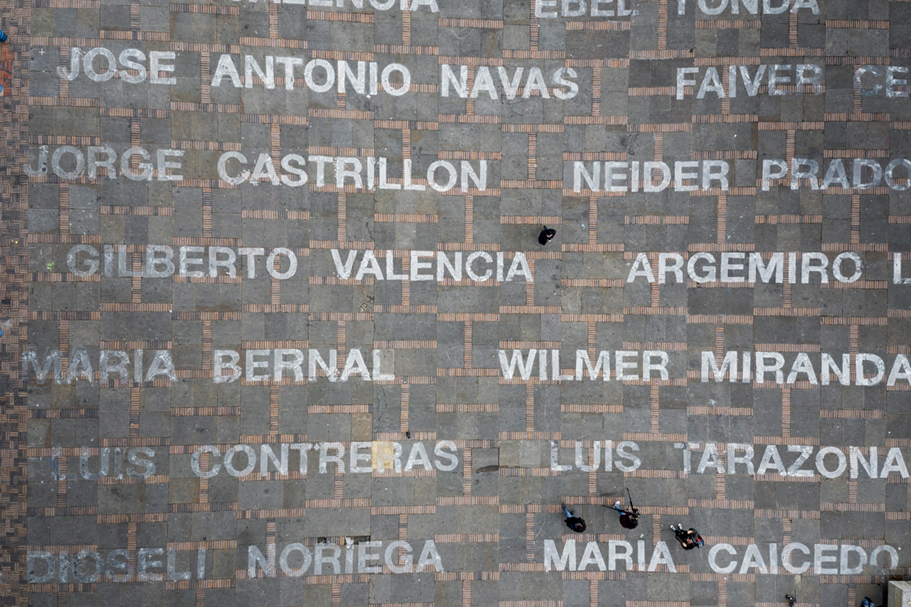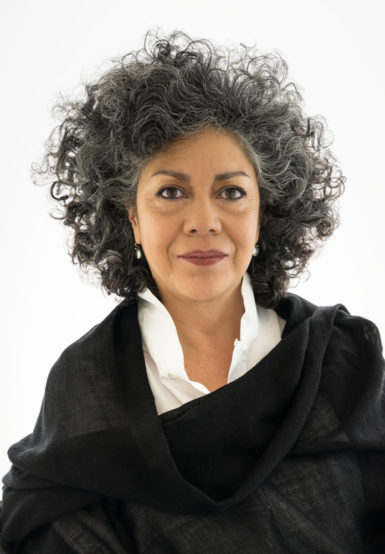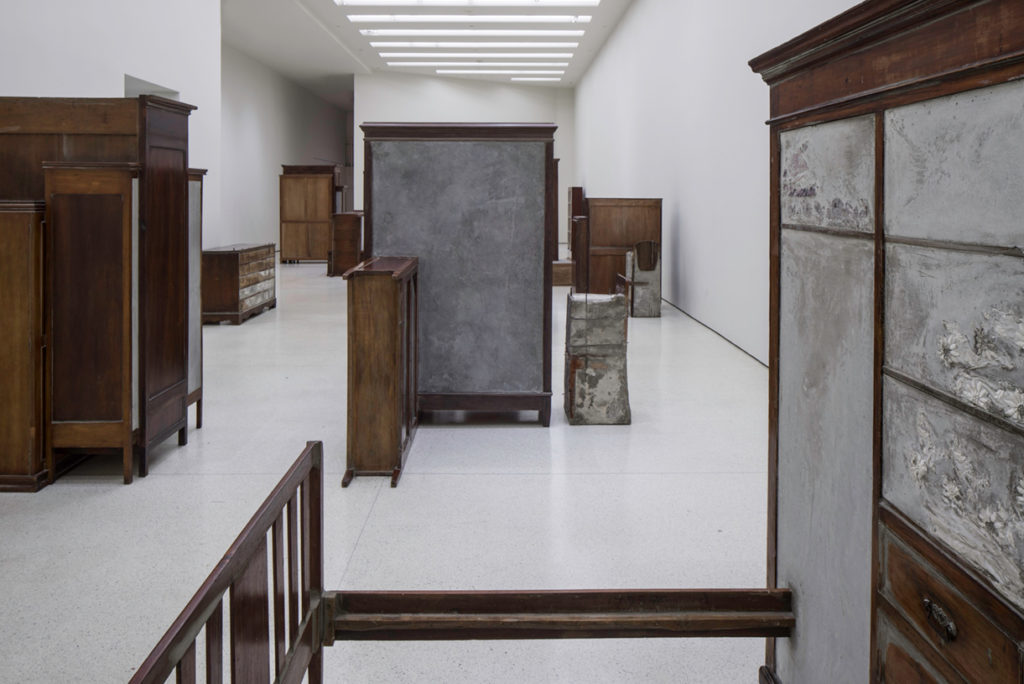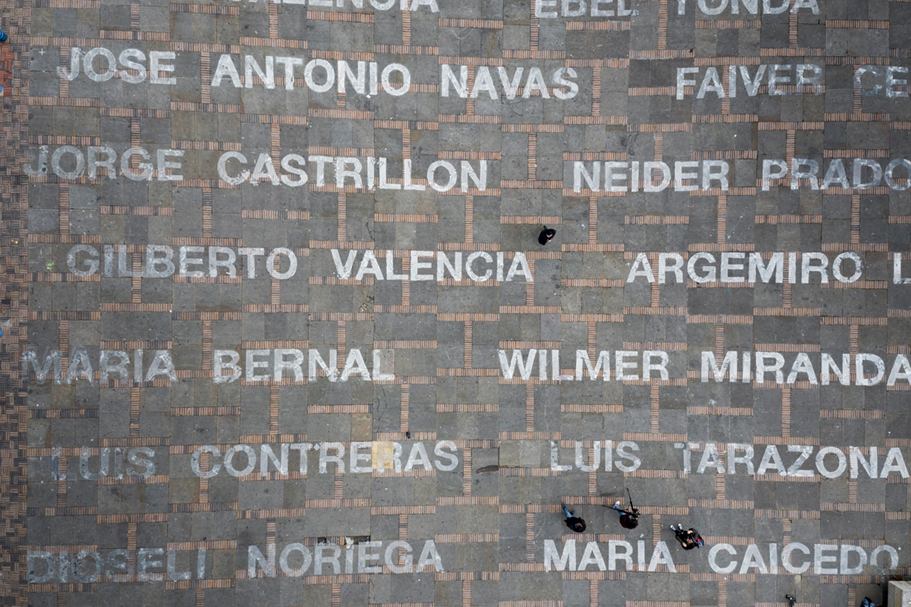[ad_1]

Doris Salcedo’s ephemeral public project Quebrantos (Shattered), 2019, made with glass, was staged in Plaza de Bolívar, Bogotá, in June.
JUAN FERNANDO CASTRO
When news came in March that a Tokyo-based financial holding company would create the world’s largest prize in contemporary art, speculation immediately began about which artist would receive the $1 million award. Finally, that winner has been revealed.
At a gala dinner in Shanghai on the evening of October 31, Doris Salcedo was named the winner of the first Nomura Art Award, which will be given annually to one artist.

Doris Salcedo.
DAVID HEALD, SOLOMON R. GUGGENHEIM FOUNDATION
With the $1 million sum, the Colombian artist will continue her series of “Acts of Mourning” installations, made in remembrance of those who have been murdered in her home country’s civil war, which has gone on for more than 50 years. First begun in 1999, the works in the series are intended as coping mechanisms for communities reckoning with profound losses.
In June, Salcedo staged the newest iteration of the series, Quebrantos (Shattered), which spelled out the names of murdered people in a large plaza in the center of Bogotá. Future editions will be presented in remote regions of Colombia, which have been hit hardest by the ongoing conflict.
“Producing projects capable of honoring the experience of victims of violence requires a large investment in time and organization, sometimes with many collaborators,” the artist said in a statement. “Because of this award, I am now able to move ahead much more quickly than I had expected with a project that is important to me, and that I hope will touch many people.”
[Read more about the world’s top artist prizes.]
Salcedo, who was born in Bogotá, where she is also now based, is known for her monumental sculptural installations focusing on the ways in which survivors and their descendants deal with various forms of trauma through mourning and grief. Often, her work visualizes the remnants of people and things that have been lost. Her most well-known works feature furniture whose negative space has been filled in with concrete, lost shoes that are embedded in walls and left visible through yellowed resin, ethereal pieces of white fabric beset with hundreds of sewing needles, and blades of grass peeking out from within a maze of wooden structures.

Doris Salcedo’s Untitled, 1989–2008, comprises of wooden furniture with glass, concrete, steel, and clothing, as installed at the Guggenheim Museum in New York in 2016.
DAVID HEALD, SOLOMON R. GUGGENHEIM FOUNDATION
Her work has been the subject of numerous exhibitions, including a traveling retrospective that opened at the Museum of Contemporary Art, Chicago in 2015 that made stops at the Guggenheim Museum in New York and the Pérez Art Museum Miami. For her 2007 Turbine Hall commission at Tate Modern in London, titled Shibboleth, Salcedo created a 548-foot-long crevasse in the museum’s floor—a poignant commentary on the ways in which immigrants fall through the cracks in the communities to which they belong.
Nicolas Serota, the chair of Arts Council England, who served on the selection jury, said in a statement, “For more than 30 years, Doris Salcedo has been making sculptures and installations that capture the anguish associated with the loss of loved ones and preserve the memory of traumatic events in the long civil war in Colombia. However, her language has an empathy and her materials an everyday character that give her work a universal meaning that speaks to people across the world.”
The international jury for the prize included some of the art world’s biggest names: Max Hollein, the director of the Metropolitan Museum of Art in New York; Kathy Halbreich, the executive director of the Robert Rauschenberg Foundation; Yuko Hasegawa, the artistic director of Museum of Contemporary Art, Tokyo; Doryun Chong, the deputy director and chief curator of the forthcoming M+ museum in Hong Kong; and Allan Schwartzman of Sotheby’s. The late curator Okwui Enwezor also served on the panel, which completed its deliberation before his death in March.
That jury also chose Cameron Rowland and Chang Ren as the recipients of the Nomura Emerging Artist Awards, which come with unrestricted cash gifts of $100,000 each.
In a statement, Hajime Ikeda, the senior managing director of Nomura, said, “Like Nomura, Doris Salcedo does not shy away from change but rather is determined to be a game-changer.”
[ad_2]
Source link

